1- Introduction- The Role of Fashion Influencers In Today’s Market
The fashion industry has undergone a significant transformation in recent years, with the emergence of fashion influencers playing a pivotal role in shaping modern trends. These influencers have leveraged social media platforms, blogs, and other online channels to build massive followings, share their personal styles, and promote fashion brands. Fashion influencers have become a vital part of the modern fashion landscape, shaping trends, influencing consumer behavior, and creating new opportunities for brands. As the fashion industry continues to evolve, it’s essential to understand the role of fashion influencers in shaping modern trends and their impact on the industry as a whole.
What Defines a Fashion Influencer?
At the heart of a fashion influencer’s power lies their robust online presence. Whether it’s through the glossy squares of Instagram, the fast-paced scrolls of TikTok, the cinematic sprawl of YouTube, or the intimate pages of a blog, they command a significant following that doesn’t just watch but engages. Their audience isn’t a monolith—it’s a living, breathing community, and these influencers understand its contours intimately, from age and interests to aspirations and quirks. This digital foothold isn’t accidental; it’s built on a foundation of consistent, magnetic content that pulls people in and keeps them hooked.
That content, in turn, springs from a well of fashion expertise. These aren’t casual dabblers—they possess a deep, often hard-earned knowledge of trends, silhouettes, and the industry’s pulse. Some honed this through formal education, others through years of trial and error, immersing themselves in the ebb and flow of styles, designers, and cultural shifts. They can spot a rising hemline or a fading color palette before it hits the mainstream, and they wield this foresight to position themselves as trusted guides. It’s not just about knowing what’s hot—it’s about knowing why it matters, and how it fits into the broader sartorial story.
Creating that story demands more than insight—it requires artistry. Fashion influencers are master content creators, churning out photographs that gleam with aesthetic precision, videos that dance with personality, or blog posts that weave advice into narrative. Their work isn’t just functional; it’s a visual feast, showcasing their personal style in ways that feel both aspirational and attainable. A single image might capture them in a thrifted coat layered over a bold skirt, or a reel might spin through a week of outfits with a voiceover dissecting each choice. This isn’t random—it’s a curated reflection of their expertise, often paired with product recommendations that feel less like sales pitches and more like secrets shared between friends.
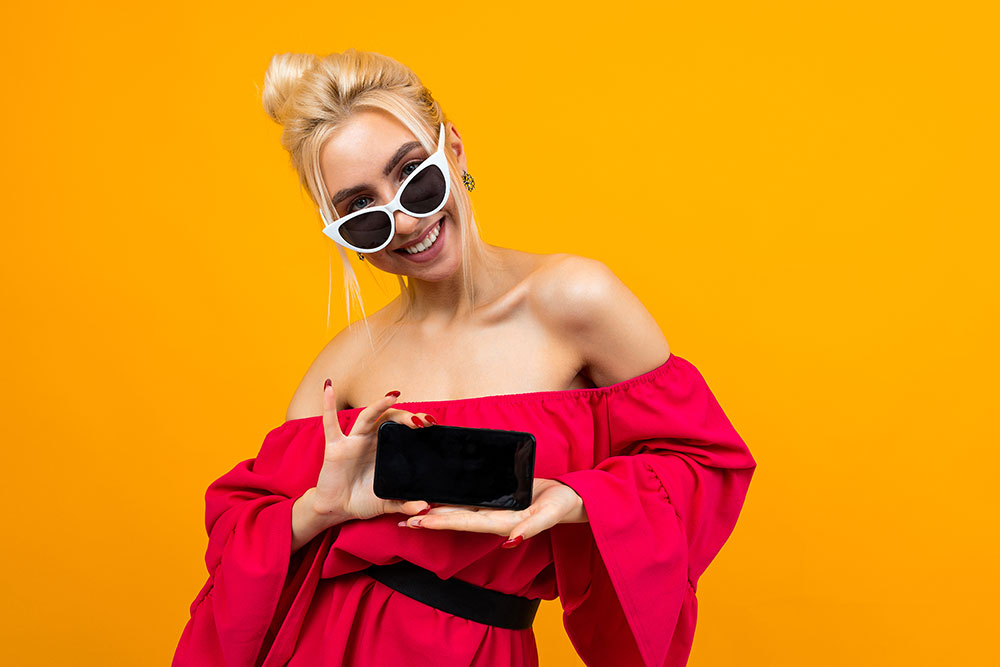
That sense of trust is the bedrock of their influence. Authenticity and credibility aren’t buzzwords here—they’re the currency that keeps their audience loyal. Fashion influencers earn this by laying bare their genuine opinions, whether it’s raving about a sustainable sneaker brand or admitting a hyped-up dress didn’t live up to the buzz.
Their experiences—successes, flops, and all—become a shared journey, and their style advice carries weight because it feels honest, not manufactured. It’s this bond that transforms their reach into real influence, the ability to nudge followers toward a purchase, spark a trend, or amplify a brand’s visibility with a single post.
The scope of that influence varies wildly across the spectrum of fashion influencers. Some are celebrities, household names who parlay their fame into fashion clout, effortlessly steering fans toward a designer bag or a red-carpet trend. Others started as bloggers, carving niches in the digital wilds—perhaps dissecting sustainable fashion with a scholar’s rigor or championing plus-size style with unapologetic verve. Then there are the social media mavens, those who’ve built empires on Instagram’s grids, TikTok’s loops, or YouTube’s long-form sprawl, their followings swelling with every swipe. Video bloggers, or vloggers, blend fashion with beauty or lifestyle, offering a panoramic view of their world through a camera lens. Meanwhile, micro-influencers thrive with smaller crowds—say, 1,000 to 100,000 followers—where their engagement runs deep, their voices resonating like a close-knit club. Even tinier are the nano-influencers, with just 100 to 1,000 devotees, yet their hyper-local, ultra-loyal audiences often wield outsized sway in tight circles.
What unites them all is their capacity to move the needle—not just in sales, but in how fashion is felt and understood. They’re not static figures; they’re dynamic forces, blending a potent mix of digital presence, stylistic know-how, creative output, and earned trust. A fashion influencer isn’t defined by one trait but by the alchemy of many, a recipe that lets them shape tastes, spark conversations, and turn fleeting trends into lasting impressions. In a world where style is both mirror and megaphone, they stand as the ones holding both, reflecting culture back to us while shouting it forward.
Fashion influencers are the beating heart of a dynamic digital ecosystem, weaving their expertise and charisma into a tapestry of activities that shape how style is shared and consumed. At their core, they’re reviewers, diving into the world of fashion products, services, and events with a keen eye and an honest voice. They’ll slip into a new pair of boots or test a subscription box, then lay out their thoughts—unfiltered praise or gentle critique—for an audience that hangs on their every word. It’s not just about judgment; it’s about trust, a bridge they build by keeping it real.
Beyond reviews, they’re walking galleries of inspiration, curating outfits that spark ideas in the minds of their followers. With every twirl in a layered dress or strut in a tailored coat, they showcase their personal style, offering a blueprint for others to riff on. This isn’t static posing—it’s a living, breathing display of creativity, whether they’re mixing thrifted finds with high-end pieces or turning a scarf into a statement. Their knack for styling becomes a beacon, lighting the way for fans seeking their own fashion footing.
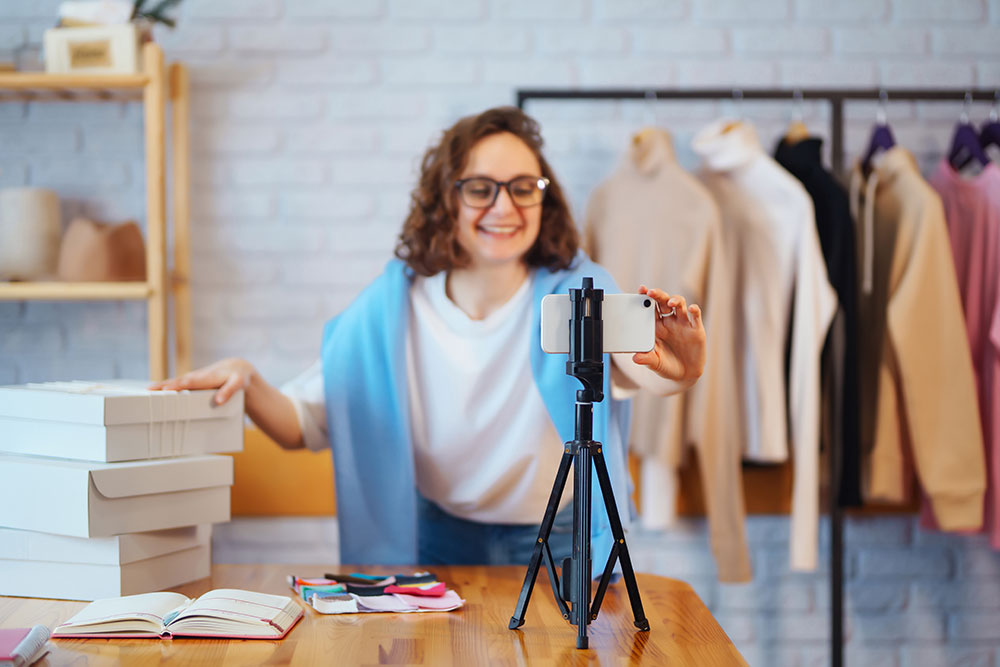
Their influence stretches further through partnerships with brands, a dance of collaboration that sees them promoting everything from a new sneaker line to a pop-up event. They don’t just slap a logo on a post—they weave the brand into their narrative, maybe filming a day-in-the-life where a jacket plays a starring role, or sharing a story of how a jewelry piece fits their vibe. These alliances are less about shouting “buy this” and more about folding the product into their world, making it feel organic, inevitable.
When fashion weeks roll around or a store throws open its doors, influencers are there, cameras in hand, soaking it all in. They cover these events with a front-row intimacy—snapping runway looks, chatting with designers, or vlogging the chaos of a launch party. It’s not just reporting; it’s storytelling, bringing their audience along for the ride as if they, too, were sipping champagne amid the glitter and grit.
All of this rests on their ability to create—content is their currency, and they mint it with care. They’re photographers framing a perfect shot against a city skyline, videographers editing a reel that dances to a trending beat, or writers spinning blog posts that dissect a trend’s roots. Every piece is polished yet personal, designed to pull viewers in and keep them scrolling, liking, sharing. Behind the scenes, they’re social media maestros, juggling the grind of posting schedules, tweaking captions, and poring over analytics to see what lands. They’re not just tossing content into the void—they’re steering a ship, adjusting the sails based on likes, comments, and shares.
And that ship doesn’t sail alone. Fashion influencers thrive on connection, fostering a sense of community that turns followers into a tribe. They’re in the comments, replying to a fan’s question about sizing or laughing at a shared meme. They ask for input—“Which color should I wear next?”—and craft content that mirrors their audience’s dreams and dilemmas. It’s a two-way street, a bond that makes their platform feel less like a stage and more like a conversation.
The ripple effects of their work are where brands find gold. Fashion influencers don’t just whisper a brand’s name—they amplify it, lifting visibility to new heights. A single post can splash a logo across thousands of screens, planting it in minds that might never have glanced twice. It’s not scattershot, though—their power lies in precision. With audiences often carved into specific niches—say, sustainable fashion lovers or streetwear diehards—they offer brands a laser-focused way to reach the right people. A plus-size influencer touting a body-positive line or a minimalist hyping a capsule collection isn’t just marketing; it’s matchmaking, connecting products to the exact crowd that’s primed to care.
In this swirl of activity, fashion influencers are more than trendsetters—they’re catalysts. They review, inspire, partner, cover, create, manage, and engage, each move building a bridge between brands and buyers. For companies, they’re a megaphone with a human pulse, turning awareness into recognition and targeting into triumph. What they do isn’t just work—it’s a craft, a hustle, a relationship, all stitched together with threads of style and savvy.
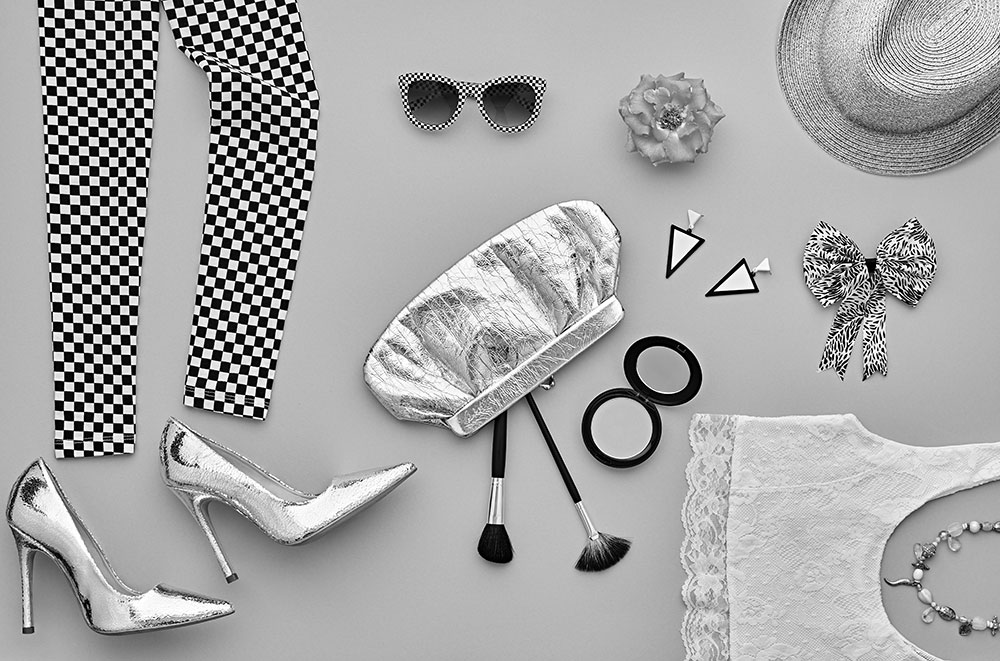
Brief History of Fashion Influencers
Fashion influencers pulse at the center of a sprawling, ever-shifting digital universe, threading their flair and know-how into a vivid web of actions that redefine how style ripples through our lives. They’re the ones who plunge into the thick of it—testing out a fresh pair of loafers or unpacking a curated fashion subscription with a sharp gaze and a voice that doesn’t hold back. When they speak, it’s not a rehearsed spiel; it’s a candid take—maybe a rave about a jacket’s fit or a shrug at a bag’s flimsy straps—delivered to an audience that leans in close, trusting the honesty they’ve come to expect. This isn’t about passing judgment for the sake of it—it’s about forging a connection, a lifeline of realness in a sea of polished noise.
Step beyond that, and they transform into living canvases of inspiration, painting outfit ideas that ignite sparks in the imaginations of those who follow. With a spin in a flowing skirt or a confident stride in a structured blazer, they lay bare their own style, a map for others to wander through and remix. It’s not just a pose frozen in time—it’s a fluid, breathing showcase of ingenuity, blending vintage scores with designer cuts or knotting a bandana into something unexpected. Their gift for piecing together looks shines like a lantern, guiding fans who are hungry to carve out their own sartorial paths.
Their reach stretches even wider through the partnerships they strike with brands, a choreography of collaboration that’s less about flashing logos and more about storytelling with soul. They might weave a new sneaker drop into a vlog of a bustling day, the shoes scuffing the pavement as a quiet co-star, or muse over how a necklace syncs with their spirit in a late-night post. It’s not a megaphone blaring “shop now”—it’s a subtle fold of the brand into their orbit, making it feel as natural as the air they breathe, a choice that’s theirs before it’s anyone else’s.
When the fashion world lights up—be it the electric hum of a runway show or the buzz of a boutique’s grand opening—they’re there, lenses ready, soaking in every thread and whisper. They capture it all with an insider’s intimacy, snapping a designer’s latest vision, trading words with creators, or filming the whirlwind of a launch night. This isn’t dry coverage—it’s a tale spun live, pulling their audience into the front row, letting them taste the champagne and feel the fabric as if they’d crashed the party themselves.
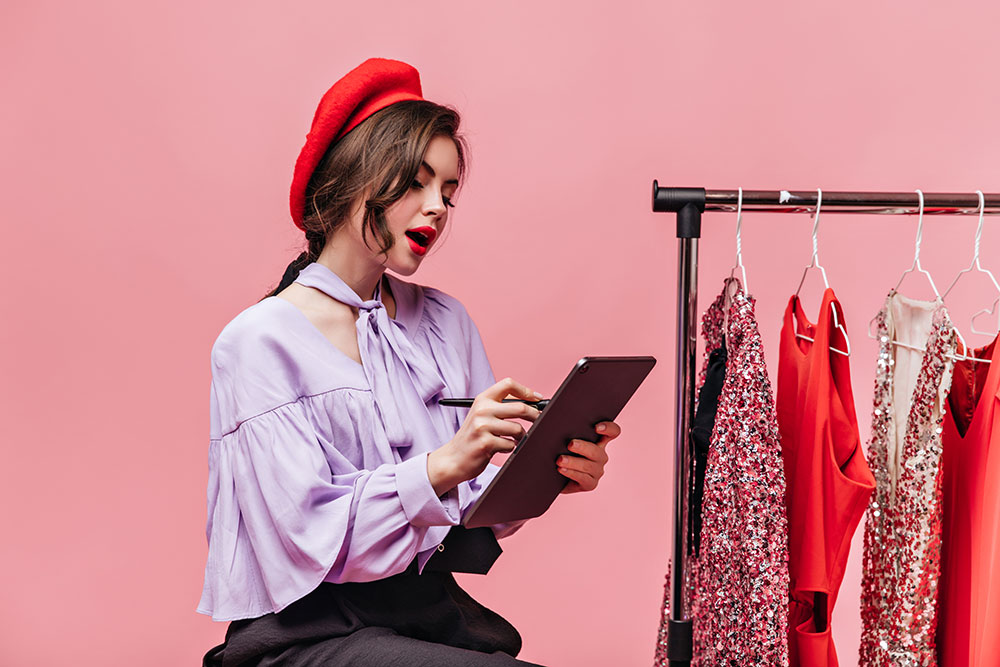
None of this happens without their craft, the art of creation that fuels their every move. Content is their lifeblood, and they pour themselves into it—snapping photos against a dusk-lit skyline, cutting videos that sway to a viral tune, or penning posts that unravel a trend’s DNA. Each frame, each clip, each word is honed to hook the eye and hold it, blending polish with a raw edge that feels unmistakably theirs. Off-camera, they’re the wizards of their own digital domains, juggling posting rhythms, fine-tuning phrases, and sifting through data to see what sings. They don’t just fling ideas out—they pilot a vessel, tweaking its course with every ripple of feedback.
That vessel sails with a crew, not in solitude. Fashion influencers thrive on the ties they knot with their followers, turning a faceless crowd into a tight-knit circle. They’re down in the trenches of the comments, answering a sizing query or chuckling at a fan’s quip. They toss out questions—“Red or blue next time?”—and shape their work to echo the hopes and quirks of those watching. It’s a give-and-take, a thread that stitches their platform into something less like a spotlight and more like a shared table, alive with chatter.
The echoes of their efforts are where brands strike treasure. Fashion influencers don’t murmur a name—they broadcast it, sending it soaring into new corners of awareness. One post can splash a label across countless feeds, lodging it in minds that might’ve scrolled past otherwise. But it’s not a wild toss—their strength is in the aim. With followings often sliced into sharp niches—think eco-warriors or sneaker obsessives—they hand brands a pinpoint way to hit the mark. A curvy creator lifting up an inclusive dress line or a clean-line devotee praising a pared-back collection isn’t just promotion—it’s a perfect match, linking goods to the people already primed to love them.
In this whirlwind, fashion influencers rise above mere trend-spotters—they’re the spark, the glue, the push. They test and muse, dream up looks, join hands with brands, chronicle the scene, craft their art, steer their channels, and weave their tribes, each step a plank in the bridge from company to consumer. For brands, they’re a voice with a heartbeat, spinning visibility into something vivid and reach into something razor-sharp. What they do isn’t a job—it’s a rhythm, a hustle, a bond, all laced with the spark of style and the grit of instinct.
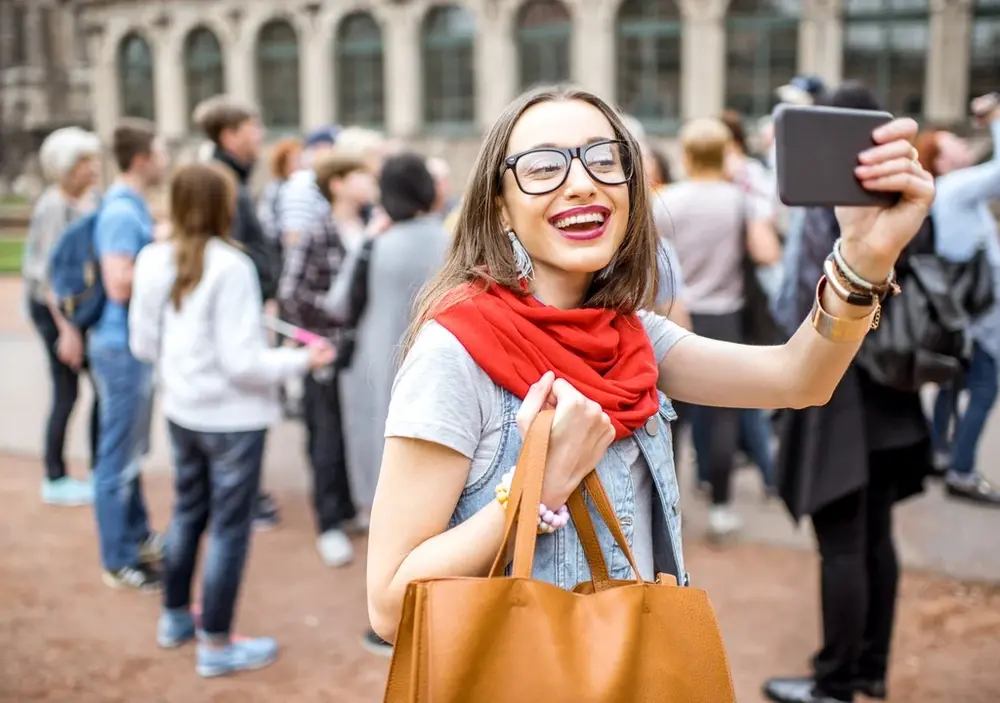
Overview of How Influencers Have Disrupted The Traditional Fashion Industry
The rise of influencers has sent shockwaves through the traditional fashion industry, upending its foundations and rewriting its rules in ways that feel both chaotic and exhilarating. What was once a tightly guarded realm—dominated by glossy magazines, elite designers, and a narrow vision of beauty—has been cracked open, reshaped by voices that thrive in the wild, unfiltered expanse of social media. Influencers haven’t just nudged the industry; they’ve torn down its walls, ushering in a revolution that’s as much about empowerment as it is about style.
Fashion, once an exclusive club, has been flung wide open, its gates stormed by a wave of diverse voices that influencers have amplified. They’ve turned the industry into a kaleidoscope of styles, sizes, and stories, shattering the old mold of airbrushed perfection. A plus-size creator might strut in a bold dress, a thrifter might layer vintage finds into something wholly new, and suddenly, the rigid beauty standards of yesteryear feel like relics. Social media has fueled this shift, handing anyone with a phone and a vision the keys to share their look, link up with brands, and gather a tribe. It’s not just a platform—it’s a megaphone for the overlooked, making fashion less a dictate from on high and more a conversation anyone can join.
This upheaval has rewritten the script for marketing and advertising, too. Where brands once leaned on billboards and TV spots, they now turn to influencers to whisper—or shout—directly into the ears of their ideal crowd. It’s a pivot from the stiff polish of traditional ads to something rawer, realer. An influencer might slip a brand’s scarf into a windswept selfie or weave a watch into a day-in-the-life reel, their relatability trumping the detached sheen of a studio shoot. That authenticity hooks followers in ways a 30-second commercial never could, driving likes, shares, and sales with a human touch that feels less like a pitch and more like a friend’s tip.
The business of fashion itself has morphed under this influence. Influencers have sliced through the middlemen, paving a direct path from brand to buyer. A creator might drop a link to a jacket they love, and with a tap, it’s in a follower’s cart—no department store required. This direct-to-consumer surge has flipped the script, letting brands sidestep traditional retail and meet customers where they scroll. Beyond that, influencers have spun new threads of revenue into the industry’s fabric—affiliate links that pay per click, sponsored posts that blend seamlessly into feeds, and collaborations that birth everything from sneakers to sundresses. It’s a goldmine of opportunity, one that’s turned creators into entrepreneurs and brands into agile players.
Authority in fashion, once the domain of editors perched in ivory towers and critics with sharpened pens, has been wrested away and redistributed. Influencers have stormed the stage, offering fresh takes that sidestep the old guard’s gatekeeping. A sustainable fashion advocate might call out a trend’s wastefulness, or a streetwear aficionado might hype a drop the glossies ignored—suddenly, the conversation shifts. These “influencer experts” have risen as new powerhouses, carving niches in eco-conscious dressing or body-positive styling, their voices carrying weight because they’re rooted in passion, not pedigree. They don’t just follow the industry—they steer it, challenging the sanctity of the traditional tastemakers with every post.

Even the hallowed ground of fashion shows and events hasn’t escaped the disruption. The spotlight has swung from the catwalk to the screen, with influencers turning runway moments into digital gold. They’re there, phones aloft, streaming live looks, peeking backstage, and sharing the chaos with followers who’d never snag a front-row seat. Brands have caught on, prioritizing this real-time coverage over static press releases, while influencers have pushed the boundaries further—spawning virtual fashion shows, online style festivals, and social media spectacles that rewrite what an “event” can be. It’s a shift that’s made fashion week less a private party and more a global stage, accessible with a swipe.
Yet this revolution isn’t without its shadows. The influencer boom has stirred up questions of authenticity—some creators face heat for peddling products they don’t truly back, their “realness” called into doubt when the paycheck’s big enough. Transparency’s become a tightrope, with followers demanding clarity on what’s paid and what’s pure. And then there’s the planet—the relentless churn of influencer-driven fast fashion has piled pressure on an industry already straining under its environmental weight. Some push back, championing slow fashion or secondhand hauls, but the tension lingers, a reminder that disruption cuts both ways.
In the end, influencers have turned the fashion industry into something unrecognizable yet electrifying. They’ve flung open doors for creativity and self-expression, handed power to the fringes, and forced brands to rethink everything from marketing to money-making. It’s a transformation that’s birthed new voices and ventures, but it’s also sparked a reckoning—about truth, about impact, about where fashion goes next. What’s clear is this: the old ways are unraveling, and influencers are the ones holding the thread, pulling it toward a future that’s as messy as it is magnetic.
The Rise of Micro and Macro Influencers
The ascent of influencers has set the traditional fashion industry ablaze, a wildfire of change driven by a new breed of voices—micro and macro influencers—who’ve stormed the stage with distinct yet intertwined powers. These digital trailblazers have unraveled the old order, threading their sway through the fabric of style in ways that ripple far beyond the runway. From the intimate reach of micro-influencers to the vast clout of their macro counterparts, their rise has reshaped how fashion breathes, moves, and matters, turning a once-exclusive world into a sprawling, vibrant tapestry.
At the heart of this upheaval lies a democratization that’s as radical as it is liberating. Influencers—whether micro, with their tight-knit followings of 1,000 to 100,000, or macro, commanding hundreds of thousands or millions—have flung open fashion’s gates, letting in a rush of diverse voices, shapes, and visions. They’ve shattered the brittle mold of traditional beauty, replacing it with a mosaic of realness—a curvy micro-influencer rocking a bold swimsuit, a macro star layering eclectic textures with effortless swagger. Social media has been their battering ram, a tool that hands anyone with a spark and a screen the chance to share their style, link up with brands, and weave a community from scratch. What was once a top-down dictate from glossy pages has become a groundswell, accessible and alive.
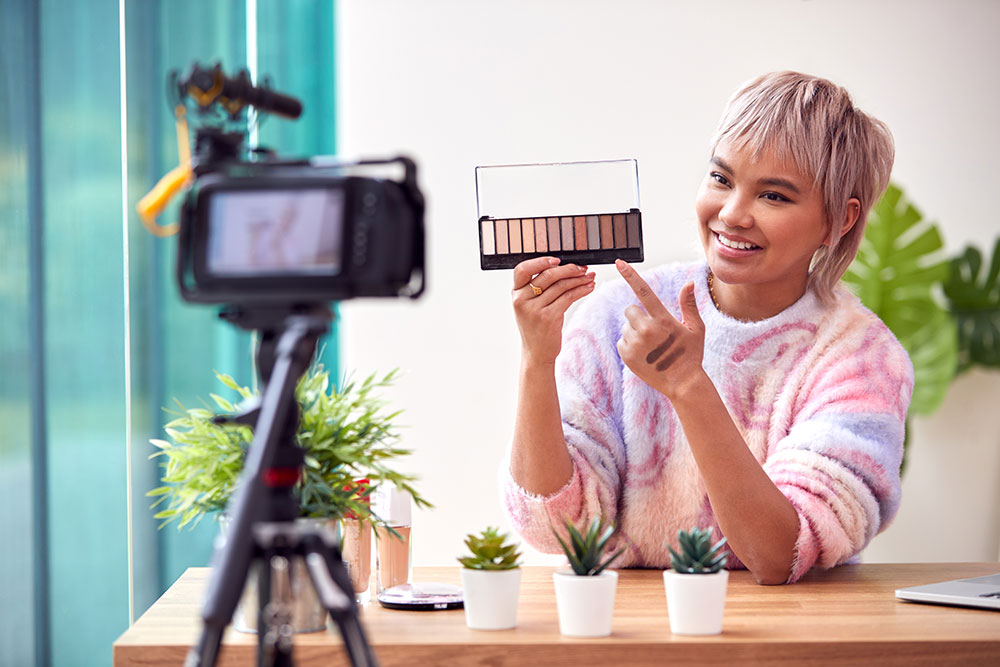
This shift has rewritten the rules of marketing and advertising, with micro and macro influencers steering brands into uncharted waters. Where once towering billboards and primetime slots held sway, now it’s a micro-influencer’s quiet reel or a macro star’s sweeping campaign that cuts through the noise. Brands lean on these creators to reach their people—micros hitting niche tribes with surgical precision, macros blanketing broader swaths with undeniable pull. The magic lies in their authenticity: a micro might muse over a scarf’s softness in a candid post, while a macro spins a jacket into a cinematic tale of their day. It’s relatable, human, and far stickier than the sterile sheen of old-school ads, driving clicks and cash with a trust that feels earned, not engineered.
The business of fashion has bent under this weight, too, as influencers redraw its blueprints. Micros and macros alike have fueled a direct-to-consumer surge, slicing through the clutter of intermediaries. A micro-influencer’s affiliate link can land a dress in a follower’s hands with one tap, while a macro’s collab might drop a whole collection straight to the masses. This immediacy has birthed new streams of gold—sponsored posts that blend into feeds, partnerships that spawn exclusive tees or totes, all flowing from the creators’ sway. Micros bring brands the loyalty of their devoted corners, while macros deliver scale, together turning fashion into a game of connection, not just commerce.
Authority in this world has flipped on its head, with influencers—big and small—toppling the thrones of traditional tastemakers. Editors and critics once ruled with iron pens, but now a micro-influencer dissecting sustainable fabrics or a macro championing streetwear holds equal, if not greater, sway. They’re the new experts, forged not in ivory towers but in the crucible of their own platforms, each carving a lane—be it eco-fashion or avant-garde flair. Micros thrive on intimacy, their niche wisdom resonating like a whispered secret, while macros wield a megaphone, their takes shaping trends on a grand stage. Together, they’ve wrested the crown from the old guard, proving influence isn’t bestowed—it’s built.
Fashion shows and events, those sacred rituals of the industry, have felt the tremor, too. The spotlight has swung from velvet ropes to digital screens, with micro and macro influencers at the helm. A micro might share a shaky live stream from a boutique opening, their followers hanging on every frame, while a macro broadcasts a runway’s glitz to millions, peeling back the curtain with backstage snippets. This hunger for real-time access has birthed new beasts—virtual shows flickering across Instagram, online festivals pulsing with TikTok energy—all sparked by influencers who’ve made “exclusive” a dirty word. Micros bring the grassroots buzz, macros the global hum, together turning events into shared spectacles.
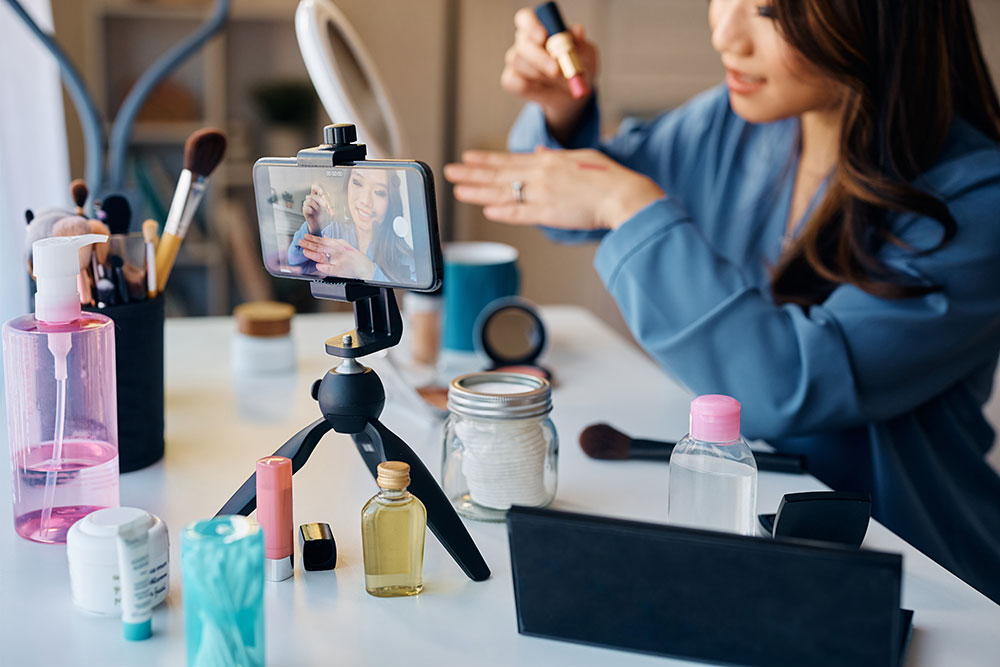
Yet this rise isn’t without its thorns. The influencer tide—micro and macro alike—has stirred a swirl of questions about truth and trust. Some stumble, hawking goods they don’t believe in, their authenticity fraying under scrutiny as followers demand clarity: “Is this real or just a paycheck?” The fast fashion churn they often fuel has cast a shadow, too, piling waste on an industry already creaking under its own excess. But there’s a flip side—micro-influencers preaching slow fashion from their cozy corners, macros wielding their reach to spotlight ethical brands. It’s a messy duality, a push and pull between impact and intent that keeps the revolution honest.
The rise of micro and macro influencers has set the fashion world spinning, a twin-force disruption that’s cracked it open for creativity, hustle, and raw expression. Micros weave tight bonds, their small-but-mighty tribes driving loyalty; macros paint broad strokes, their scale rewriting the map. Together, they’ve turned an industry once ruled by gatekeepers into one fueled by makers—makers of style, of stories, of change. It’s a transformation that dazzles with possibility, even as it wrestles with its own weight, leaving us to wonder not just what fashion is, but what it could become.
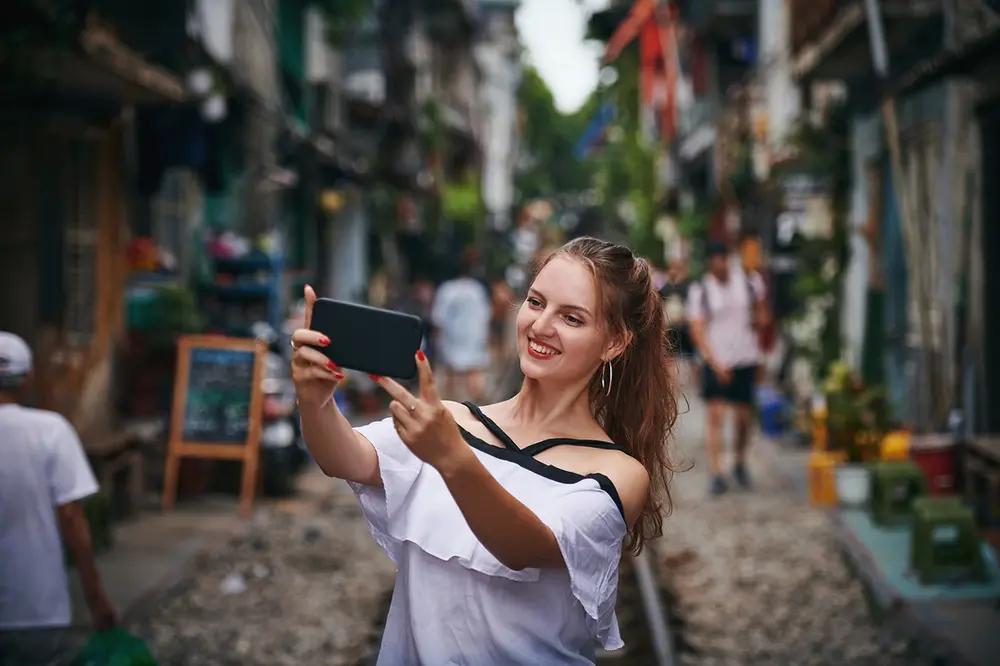
2- The Impact of Social Media on Fashion Trends
Social media has crashed into the fashion universe like a comet, leaving a trail of disruption and dazzle that’s forever altered how trends spark, spread, and settle into our wardrobes. It’s not just a tool—it’s a force, a restless current that’s transformed the way fashion is dreamed up, passed around, and worn. Platforms like Instagram, YouTube, and TikTok have turned what was once a slow, top-down drip of style into a wild, swirling torrent, driven by creators and communities who’ve seized the reins from the old guard. This isn’t a quiet shift—it’s a revolution, stitched together by screens and scrolls, reshaping how we see and chase what’s next.
Picture Instagram as a shimmering kaleidoscope, a place where fashion unfolds in snapshots and snippets that catch the eye and hold it tight. It’s a treasure hunt of visuals—scroll through a hashtag like #OOTD or swipe a Reel, and you’ll stumble on a new vibe: a chunky knit layered just right, a tiny brand’s bold bag, a creator twirling in something you didn’t know you needed. Influencers are the heartbeat here, threading brands into their lives with a finesse that feels less like selling and more like sharing—a pair of boots scuffed from a city walk, a dress that glows in a golden-hour shot. The platform’s bred its own look, too—a sleek, luxe minimalism that screams “Instagram chic,” all clean lines and high-end hints. Brands play along, peeling back their stories with live streams or IGTV dives, showing the chaos of a shoot or the gleam of a new drop, pulling followers into a world that’s as close as their phone.
Then there’s YouTube, a sprawling stage where fashion stretches out and takes its time. It’s the deep end of the pool—creators plunge in with videos that unpack a haul, dissect a trend, or walk you through a styling trick with the patience of a friend. A vlogger might spend ten minutes on a coat’s quirks—how it fits, how it lasts—building a trust that’s thicker than a quick pic ever could. Brands love this space, too; it’s where they can roll out a product in full color, showing every angle, every perk, letting the camera linger on what matters. The comments buzz below, a tangle of questions and cheers that knit a crowd into a crew, loyal and loud, swapping tips and tales with the creator who’s less a star and more a guide.

TikTok, though, is the lightning strike—a jolt of short, sharp chaos that’s rewritten fashion’s tempo. In a flash of 15 or 60 seconds, a creator can toss out a look—say, a thrift-store jacket hacked into coolness or a skirt that sways to a beat—and watch it catch fire. Hashtag challenges fan the flames: #FashionHacks or #EcoStyle might kick off a wave, millions jumping in with their own spins until a quirky fit becomes a full-blown thing. It’s raw here, unpolished—less about curated perfection and more about real life, a messy closet, a quick laugh. The algorithm’s a wizard, too, flinging fresh faces and tiny labels into the spotlight, making fame a lottery where anyone with a good idea can win big, fast.
Across these realms, patterns emerge like threads in a loom. Sustainability’s woven deep now—a creator on Instagram might flaunt a secondhand haul, a YouTuber might preach slow fashion’s gospel, a TikToker might stitch a shirt from scraps, all nudging the crowd toward greener choices. Diversity’s blooming, too—bodies of all kinds, ages, and hues strut across feeds, a quiet defiance of the industry’s old, tight mold. And then there’s the glue: connection. These platforms hum with it—comments ping back and forth, live chats crackle, challenges spark a shared rush. It’s not a monologue anymore; it’s a raucous, rolling chat where creators, brands, and fans trade the mic.
Social media’s impact on fashion trends is a full-on rewrite—a shift from elite whispers to a global shout. Instagram paints it pretty, YouTube digs it deep, TikTok shakes it loose, and together they’ve turned style into a living thing, born not in boardrooms but in bedrooms, streets, and screens. Trends don’t just trickle now—they erupt, fueled by a million hands tweaking, sharing, wearing. It’s messy, it’s loud, it’s alive—a fashion world that’s less about following and more about making, all sparked by the restless glow of social media.
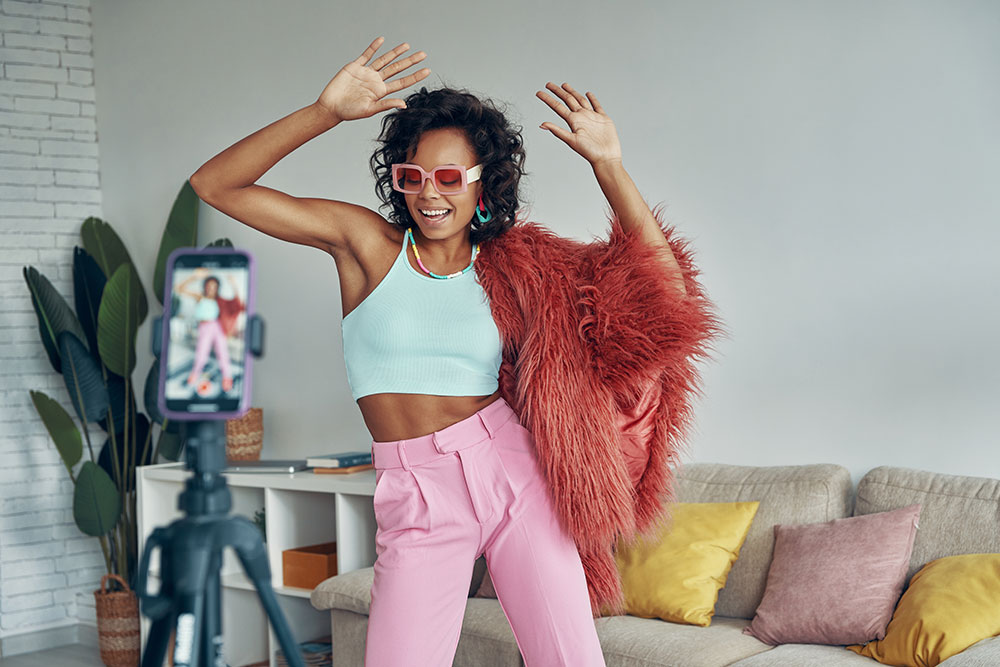
How Instagram, YouTube, and TikTok are Shaping Fashion Trends.
Instagram, YouTube, and TikTok have crashed into the fashion world like a trio of renegades, each carving out its own turf to mold trends in ways that feel alive and untamed. These platforms have flipped the script on how style comes to be—less a polished decree from distant designers, more a chaotic, collective roar rising from the digital ether. As of 2025, they’re not just mirrors reflecting what’s hot; they’re furnaces forging it, each with its own fire, fueling a fashion landscape that’s as sprawling as it is spontaneous.
Instagram rolls out like a sleek, endless runway, a place where trends flicker into being through a haze of images and clips. It’s a visual whirlpool—scroll past a #FashionFinds tag or linger on a Reel, and you’re hit with a rush of inspiration: a creator slinging a oversized coat over ripped jeans, a fledgling label’s scarf catching the light. Influencers are the pulse here, slipping brands into their days with a casual grace—a pair of shades perched on a nose, a skirt swaying in a subway breeze—that feels more like a nod than a nudge. The platform’s brewed its own brew, a glossy “Insta vibe” of sharp edges and luxe whispers, where every post could double as a magazine spread. Brands ride this wave, unfurling their stories through live riffs or long-form IGTV cuts—showing a pattern’s birth, teasing a launch—hooking followers into a saga that’s just a tap away
Youtube, on the other hand, unfurls like a slow-burn epic, giving fashion room to stretch and settle. It’s where creators sink deep—spinning a 20-minute tale of a thrift haul, picking apart a trend’s bones, or guiding you through a layering trick with a steady hand. There’s weight to it—a vlogger might tug on a vest, muse over its weave, its wear, weaving a trust that’s solid as stone. Brands thrive in this sprawl, letting their goods breathe: a boot’s laces knot, a dress’s hem flutters, all caught in a frame that lingers. It’s a haven for the fashion-wise—someone tracing denim’s comeback or showing a shawl’s secret lives—and the comments below crackle, a chorus of fans swapping thoughts, building a crew that’s as hooked on the chat as the clothes.
TikTok’s the spark that ignites it all—a quick, jagged burst that turns fashion into a fever dream. In a handful of seconds, a creator can twist a hand-me-down into a masterpiece, shimmy in pants that launch a frenzy, or cobble a top from rags, all with a grit that’s pure and unposed. Hashtag battles set it off—#WearItWild or #ThriftFlip might flare up, dragging millions into a whirlwind where a single fit spawns a thousand twins by dawn. It’s rough-edged, real—a stumble through a messy room, a laugh over a wonky hem—and that’s its power. The algorithm’s a rogue dealer, tossing unknowns and small fries into the big leagues, letting a kid with a vision or a startup with a cap steal the show in a blink.
These three don’t just play together—they collide, crafting a fashion world that’s raw, rich, and restless. Instagram drapes it in shine, YouTube roots it in reason, TikTok tears it loose, and the result is a tidal shift—style yanked from the clutches of the few and flung to the many. Creators strut in mismatched layers, preach green threads, or rock looks the old gatekeepers would’ve snubbed, and it’s all fair game now. Trends don’t drip anymore—they burst, born from a million thumbs tapping, tweaking, trying. It’s a messy, mighty churn, and Instagram, YouTube, and TikTok are the engines driving it—making fashion less a rulebook and more a riot.
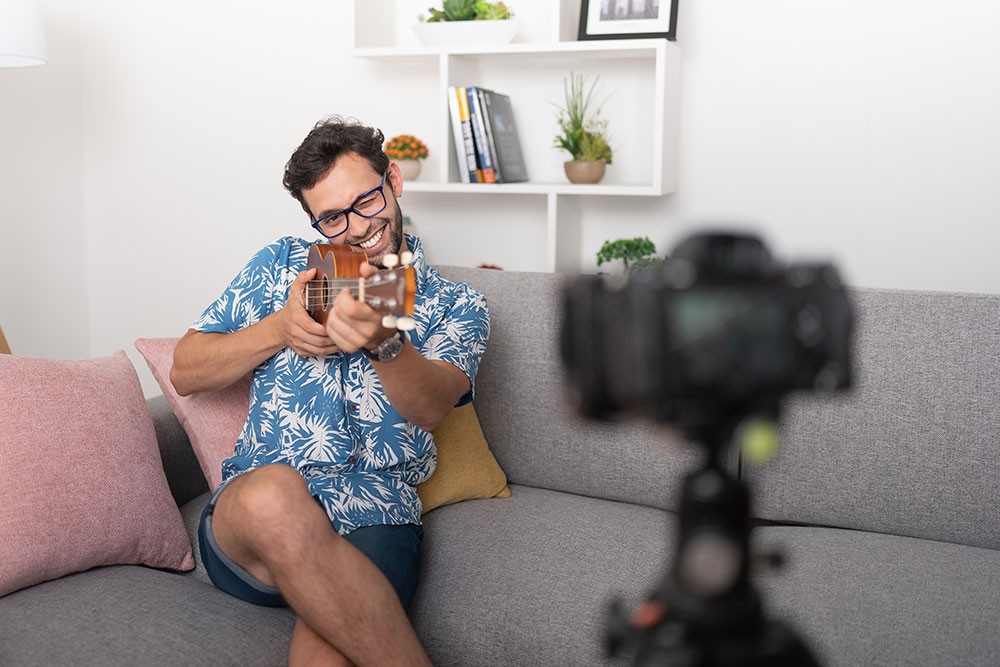
The Role of Short-Form Video Content in Trend-Setting
Short-form video content is like that friend who shows up with a wild idea and somehow gets everyone on board in minutes. We’re talking those quick 15-to-60-second clips you see on TikTok or Instagram Reels—little bursts of chaos that you can watch, laugh at, and pass along without blinking. They’re snack-sized, easy to swallow, and perfect for sharing when you’re just scrolling through your day. What makes them pop? They’ve got this knack for grabbing you—think a killer beat, a goofy dance, or some random moment that’s too good to skip. And they don’t mess around with fancy edits or fake vibes either. It’s more like peeking into someone’s real life—messy hair, half-finished coffee, the kind of raw stuff that feels like you’re in on it.
These little videos are trend-setting machines, spreading ideas faster than gossip at a family reunion. One day, some creator’s twirling in a weird skirt combo, and by the next, there’s a hashtag blowing up—#SkirtHack or whatever—and suddenly everyone’s digging through their closet to try it. It’s not just watching; it’s joining in, like a big, messy group project where anyone can toss their spin into the mix. The big names on TikTok or Reels? They’re the ones lighting the fuse—rocking a funky jacket or starting a challenge that’s got half the app copying them before breakfast. And it’s not a one-way street either—the comments are popping, people are stitching their own takes, and the whole thing feels like a party you’re actually invited to.
Brands are all over this, too. They’ll buddy up with some creator who’s got the magic touch, slipping their sneakers or a new bag into a clip that’s already halfway to viral. It’s less “hey, buy this” and more “look how cool this fits into my day,” and that’s what makes it stick. When it comes to fashion, these videos are shaking things up big time. Take sustainable stuff—folks are out there showing off thrift hauls or swapping clothes, making green vibes look less preachy and more doable. Then there’s the streetwear crowd, flexing rare kicks or baggy fits that turn heads, building this whole sneaker-head culture one clip at a time. It’s not just about what’s cool, though—body positivity’s getting a megaphone, with creators strutting in all shapes and sizes, saying, “Yeah, this is me, and it’s awesome.” Even old-school 90s and Y2K looks are back, popping up in videos with butterfly clips and low-rise jeans like it’s a time machine you can dance to.
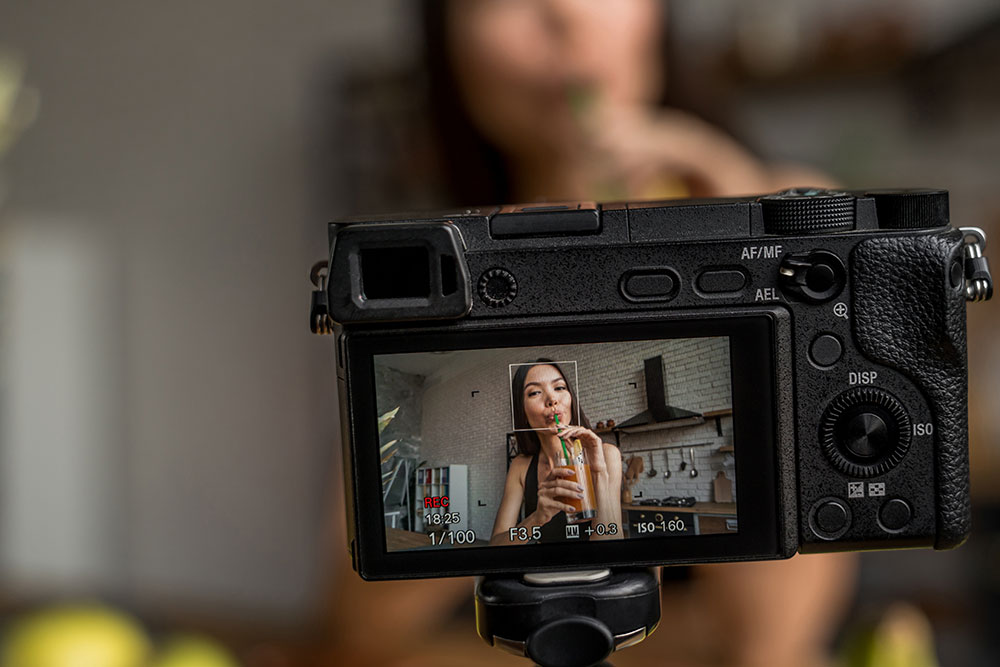
But it’s not all smooth sailing. For brands jumping in, it’s a bit of a gamble—picking the right creator’s tricky. You’ve got to find someone who’s real, who fits what you’re about, or it’s just cringe and nobody buys it. Plus, figuring out if it’s worth the cash? That’s a headache—likes and views don’t always mean wallets are opening. And these trends? They’re like fireworks—bright and loud one second, gone the next. You’ve got to move fast or you’re yesterday’s news. Still, there’s a flip side—tons of room to play. Brands can mix it up, maybe jump on a live stream, toss something longer on IGTV, or even hit YouTube to stretch their reach past the quick-hit crowd.
Short-form video’s this crazy, fast-moving beast that’s flipping trend-setting on its head. It’s not about waiting for some fancy magazine to tell you what’s hot—it’s about regular people, big creators, and brands all tossing ideas into the pot, stirring it up, and seeing what bubbles over. Whether it’s a sustainable swap, a streetwear flex, or a throwback vibe, these clips are where fashion’s happening right now—quick, real, and ready for anyone to jump in.
How Influencers Use Trends Like #OOTD (Outfit of The day) to Engage Audiences
In the buzzing chaos of 2025’s digital landscape, where every scroll is a gamble for attention, influencers have turned trends like #OOTD—Outfit of the Day—into a secret weapon for pulling their audiences in close. It’s more than just a hashtag; it’s a daily ritual, a flex, a conversation starter that’s been lighting up platforms like Instagram, TikTok, and YouTube for years, and it’s still going strong.
Picture this: a creator steps out of their messy bedroom, phone in hand, and snaps a pic or a quick clip of what they’re wearing—maybe it’s a thrifted jacket over leggings, or a sleek dress with chunky boots. They slap #OOTD on it, toss it online, and suddenly, they’re not just showing off—they’re inviting a whole crew to lean in, chat, and maybe even copy. This isn’t some high-and-mighty fashion lecture; it’s a down-to-earth hook that influencers wield to keep their people hooked, and it works like a charm.
The beauty of #OOTD lies in its simplicity—it’s a daily drop-in, a little window into someone’s life that feels real and reachable. Influencers don’t need a runway or a stylist to make it pop; they just need what’s in their closet and a vibe to match. Say a micro-influencer with a few thousand followers wakes up, throws on a denim skirt and a graphic tee, and snaps a mirror selfie—caption: “#OOTD because coffee’s calling.” It’s casual, it’s relatable, and that’s the bait. Their audience—maybe a mix of students, young pros, or thrifty moms—sees it and thinks, “Hey, I’ve got a skirt like that,” or “I could pull that off.” It’s not about unattainable glamour; it’s about sparking that “me too” moment. Bigger influencers take it up a notch—think a macro creator with millions, strutting in a designer coat and sneakers, spinning a 15-second TikTok with a slick beat. The hashtag ties it all together, a signal that says, “This is today’s vibe, come vibe with me,” and fans flood in, liking, commenting, saving it for later.
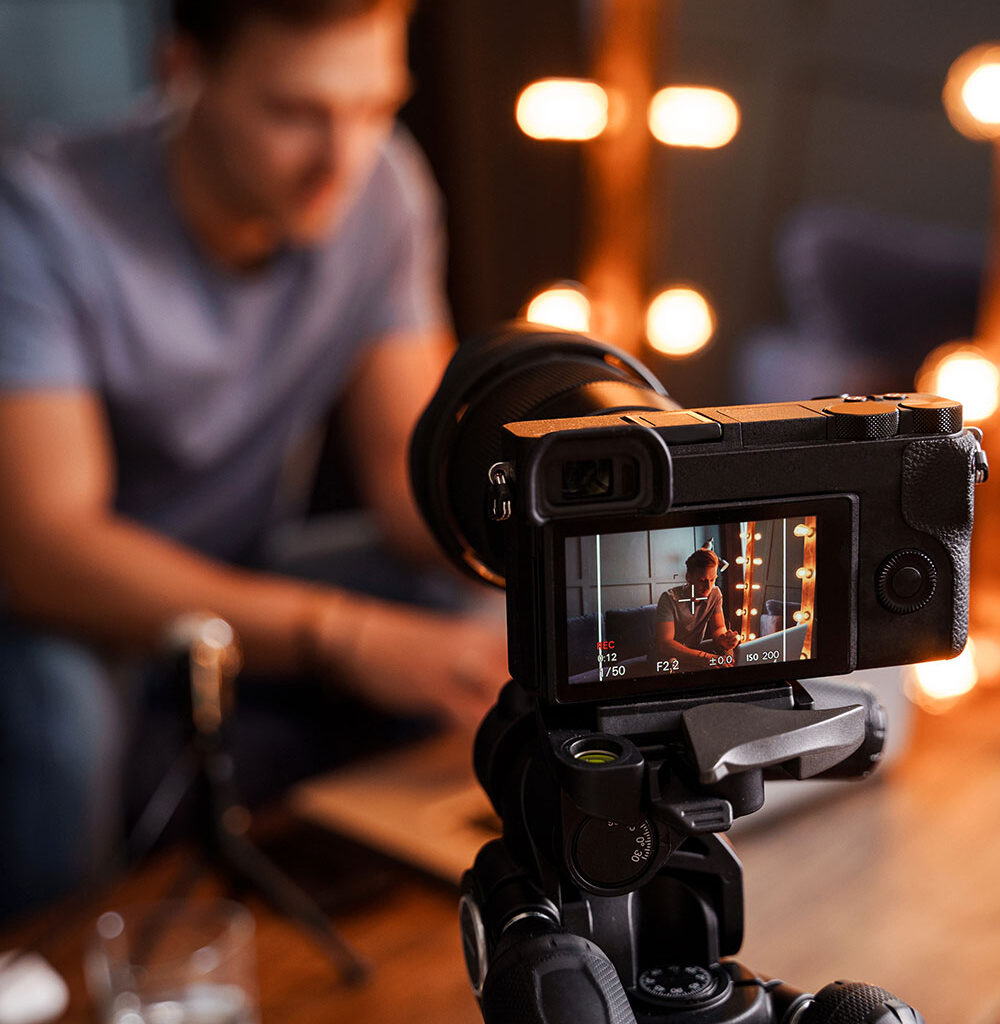
That engagement’s where the real magic kicks in. #OOTD isn’t a one-and-done post—it’s a launchpad for connection. When an influencer drops their outfit, it’s like tossing a pebble into a pond—the ripples hit fast. Followers chime in: “Where’d you get that top?” or “Obsessed with those shoes!” The influencer might hop into the comments—“Got it at a thrift spot!”—and suddenly, it’s a back-and-forth, a little chat that makes the audience feel seen. On TikTok, it’s even wilder—someone stitches their own #OOTD, tweaking the look with a scarf or a different fit, and the trend snowballs. Instagram’s Reels let creators lean into stories, maybe showing the “why” behind the outfit—“Running late, so this is my chaos chic”—and fans drop hearts or DMs, begging for links. It’s not just a post; it’s a spark that lights up a whole network, pulling people in because they’re not just watching—they’re part of it.
Influencers play this game smart, too—they know #OOTD’s a goldmine for keeping their crowd tight and growing. It’s daily fuel, a steady drip that keeps them relevant without feeling forced. A fashion nano-influencer might post every morning—Monday’s a cozy sweater, Tuesday’s a bold blazer—building a rhythm their followers start to crave. It’s like a soap opera: “What’s she wearing today?” Consistency’s key, but so’s the twist—they’ll switch it up, maybe tossing in a sustainable angle (“This shirt’s secondhand, #OOTD and eco vibes”) or a challenge (“Show me your #OOTD, let’s match!”). Bigger players mix in brand deals—say, a sneaker collab slipped into a “casual Friday #OOTD”—but they keep it smooth, less “buy this” and more “this fits my life, maybe it fits yours.” The hashtag’s a Trojan horse, sneaking in engagement disguised as a peek at their day, and it’s why their notifications stay buzzing.
The audience doesn’t just eat it up—they run with it. #OOTD’s power is how it hands the mic back. A follower sees an influencer’s post—maybe a flowy dress with a denim jacket—and thinks, “I’ve got pieces like that.” Next thing you know, they’re snapping their own #OOTD, posting it, tagging the creator. It’s a loop. Inspiration flows out, then boomerangs back, building a tribe that’s all in on the trend. On TikTok, it’s a frenzy—duets and stitches turn one outfit into a dozen, each tweak adding fuel. Instagram’s got Stories polls—“Rate my #OOTD, 1-10”—and suddenly, fans are voting, chatting, feeling like they’ve got a stake. YouTube influencers might stretch it into a “week of #OOTD” vlog, showing seven looks and asking viewers to pick a fave in the comments. It’s not passive fandom; it’s a two-way street where the audience isn’t just watching—they’re co-stars, shaping the vibe as it rolls.
This isn’t random—it’s a masterclass in keeping things fresh and sticky. Influencers lean on #OOTD to flex their style, sure, but also to stay human. A micro-influencer might show the same jeans three ways over a month, proving you don’t need a fat wallet to play. A macro star might weave in a luxury bag, but pair it with a drugstore lip gloss, balancing aspirational with “hey, I’m like you.” The hashtag’s a daily pulse, a beat that keeps their feed alive—today’s a rainy-day fit, tomorrow’s a work-from-home slay. And when they tie it to bigger waves—like body positivity (“#OOTD in my skin, loving it”) or 90s throwbacks (“#OOTD with a Discman vibe”)—it’s a hook that sinks deeper, pulling in followers who see themselves in the mix.
Brands watch this like hawks, and influencers know it. A sly #OOTD can slide in a sponsored piece—a watch, a scarf—without breaking the spell, because it’s still their story. Fans don’t flinch; they’re too busy asking “Where’s that from?” or “Can I pull that off?” It’s a trust thing—years of daily drops have made #OOTD a safe space, a ritual that feels less like marketing and more like catching up. And that’s the genius. It’s a trend that’s always trending, a canvas influencers paint on day after day, keeping their crowd close, curious, and ready to jump in. In 2025, #OOTD isn’t just an outfit—it’s a handshake, a “you in?” that keeps the whole game spinning.
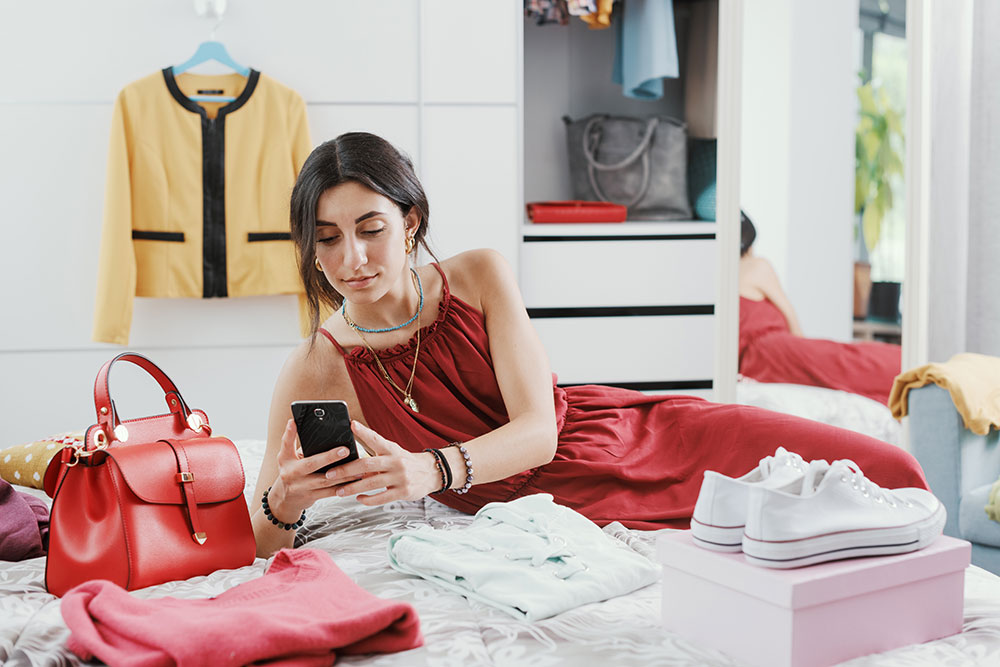
Influencer Collaborations With fashion Brands On Social Platforms
In today’s digital age, the fashion industry has found a powerful ally in social media influencers. These online personalities, with their loyal followings and knack for creating engaging content, have transformed how fashion brands connect with consumers. By partnering with influencers on platforms like Instagram, TikTok, YouTube, and Twitter, brands can amplify their presence, build trust, and drive sales in ways traditional advertising struggles to match. This essay explores the benefits of these collaborations, the different forms they take, the platforms that host them, and how their success is measured—all while highlighting why this trend has become a cornerstone of modern fashion marketing.
The Power of Influencer Partnerships
One of the biggest perks of teaming up with influencers is the boost in brand visibility. Fashion brands, whether established giants or emerging labels, can tap into an influencer’s audience to reach people who might never have stumbled across their products otherwise. A single post or video can send waves of traffic to a brand’s website, turning curious scrollers into potential buyers. What makes this even more effective is the authenticity influencers bring to the table. Unlike polished ad campaigns, influencers share personal stories or styling tips featuring the brand’s items, making their endorsements feel genuine and relatable. Followers trust these recommendations because they come from someone they admire, not a faceless corporation.
Beyond visibility and trust, influencers offer precision in reaching the right crowd. Fashion is all about identity, and influencers often cater to specific niches—think sustainable fashion lovers, streetwear enthusiasts, or luxury aficionados. Brands can pick partners whose followers match their target market, ensuring their message hits home with the people most likely to care. Plus, influencers are content machines. They churn out eye-catching photos, videos, or tutorials that brands can repurpose across their own channels, saving time and money while keeping their feeds fresh and engaging.

Types of Collaborations in Fashion
Influencer partnerships come in many flavors, each serving a unique purpose. The most common is the sponsored post, where a brand pays an influencer to showcase their clothing or accessories in a one-off feature. It’s quick, straightforward, and lets brands test the waters with minimal commitment. For a deeper connection, some brands go all-in with product collaborations. Here, influencers co-design exclusive pieces—like a capsule collection of dresses or a signature sneaker drop—blending their personal style with the brand’s aesthetic. These limited-edition releases often spark hype and sell out fast, thanks to the influencer’s stamp of approval.
Then there are brand ambassadors, a longer-term gig where influencers become the face of a fashion label. They might wear the brand’s outfits regularly, attend events, or star in campaigns, weaving the brand into their ongoing narrative. This builds a steady, recognizable link between the influencer and the label. Another fun twist is the social media takeover, where an influencer temporarily hijacks a brand’s account for a day. They might share behind-the-scenes looks, style tips, or live Q&As, giving followers a fresh perspective while keeping the brand’s page buzzing with activity.
Platforms Driving the Trend
The platforms hosting these collaborations are as diverse as the influencers themselves. Instagram reigns supreme in the fashion world, thanks to its visual focus. Sponsored posts, swipe-up Stories, and snappy Reels let influencers flaunt outfits in ways that feel seamless and shoppable. TikTok, meanwhile, has exploded as a playground for fashion creativity. Its short, punchy videos—often paired with trending sounds or hashtag challenges—make it easy for influencers to show off a brand’s vibe in under a minute. A viral dance in a designer jacket or a “get ready with me” clip can rack up millions of views overnight.
YouTube offers a slower burn but deeper dive. Influencers use it for detailed content like try-on hauls, where they unpack a brand’s latest collection, or tutorials on styling a tricky piece. It’s perfect for brands wanting to showcase quality or versatility. Twitter, though less visual, shines for real-time buzz. Influencers can drop quick thoughts on a fashion drop, spark conversations with branded hashtags, or live-tweet from a runway show, keeping the brand relevant in fast-moving feeds.
Measuring the Impact
So, how do brands know if these collaborations are worth it? It starts with engagement—likes, comments, shares, and saves tell them how much an influencer’s audience is vibing with the content. A post that sparks a flood of “Where can I get this?” comments is a win. Reach and impressions dig into the numbers game, showing how many eyes landed on the brand’s message. But the real gold is in conversions—did people actually buy that dress or bag after seeing it on their favorite influencer? Tracking sales through affiliate links or promo codes gives a clear picture of return on investment.
Beyond the hard stats, there’s the softer side
how does the collaboration shape the brand’s image? Surveys, social listening, or shifts in follower sentiment can reveal if people now see the brand as cooler, more ethical, or just more familiar. A successful partnership doesn’t just move product—it builds a story that sticks with consumers long after the post fades from their feed.
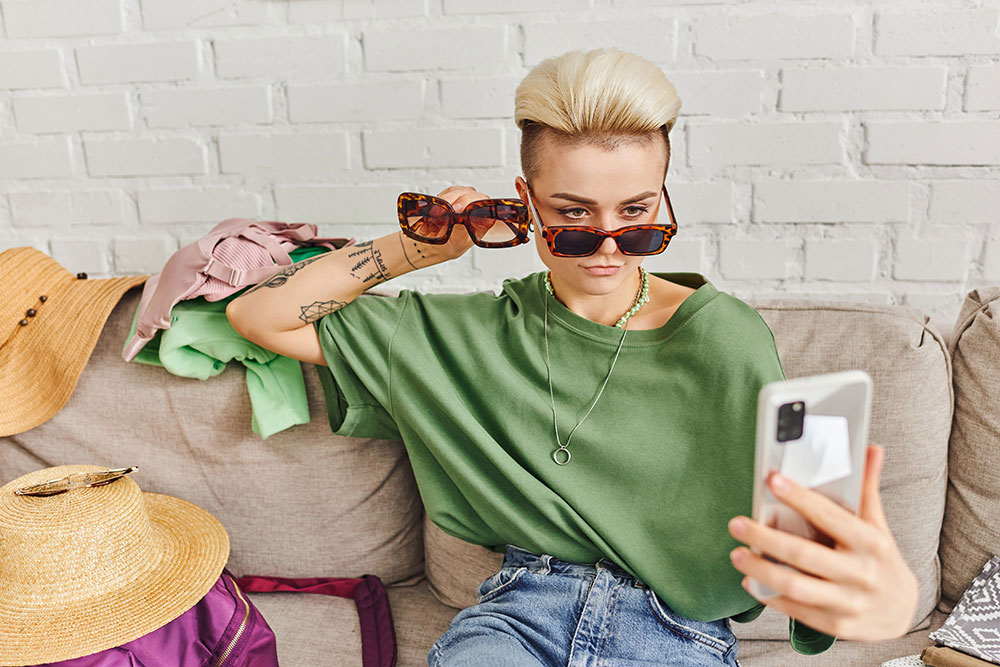
Why It Works
Influencer collaborations have become a fashion brand’s secret weapon because they blend human connection with digital reach. In a world where ads are skipped and billboards ignored, influencers cut through the noise with voices people actually want to hear. They turn passive scrolling into active interest, making fashion feel personal again. As social platforms evolve and influencers refine their craft, this partnership model isn’t just a trend—it’s a new way of doing business, one stylish post at a time.
Continue Reading
- How Fashion Influencers Are Shaping The Modern Trends- part 1
- How Fashion Influencers Are Shaping The Modern Trends- part 2
- How Fashion Influencers Are Shaping The Modern Trends- part 3
- How Fashion Influencers Are Shaping The Modern Trends- part 4
Written By: Gloria Egiemeh


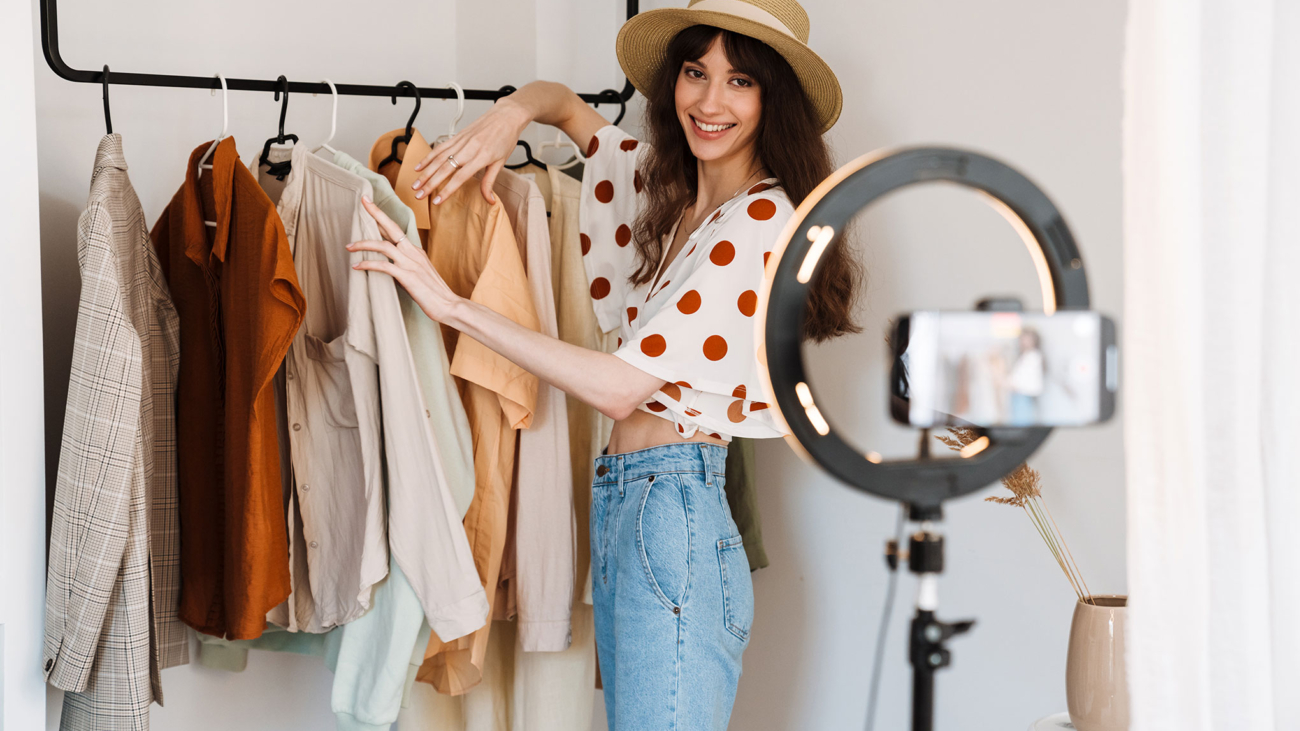
Add a Comment